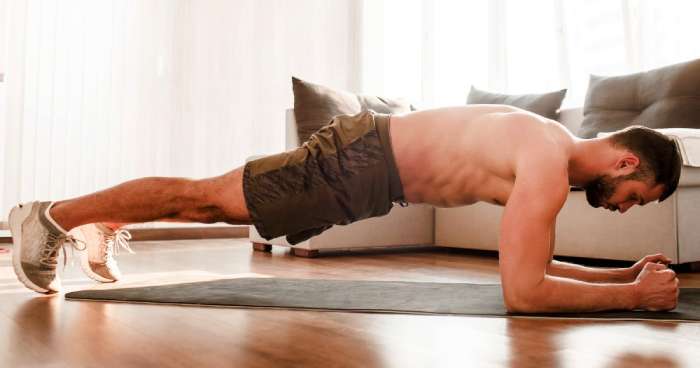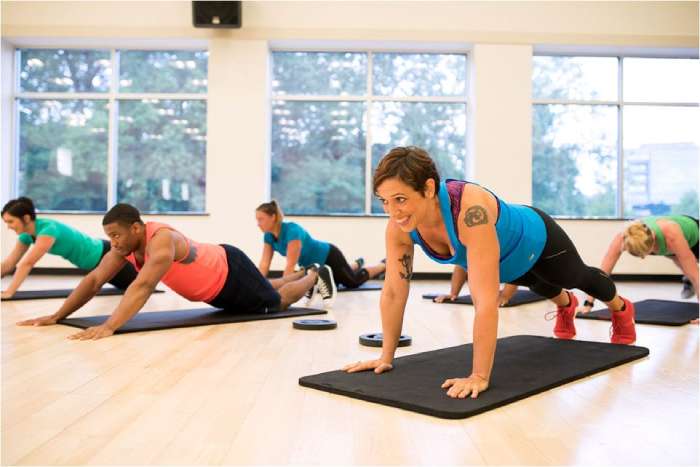Do you dread doing planking exercises because you feel like your belly is hanging out? You’re not alone. Many people struggle with this issue, but there are ways to decrease the amount of belly hanging out during planking. Understanding why your belly hangs during planking exercises, building core strength, perfecting your posture and form, and increasing muscular endurance can all help.
With a few adjustments and modifications, you can start planking without worrying about your belly hanging out.
Muscular Engagement: The Role of Core Muscles
The proper engagement of the muscles is essential when performing plank exercises to ensure correct form and successful results. To engage the muscles correctly, it is important to focus on the core and glutes. This will help to keep the spine in a neutral position and to avoid arching the back.
Additionally, increasing flexibility and using weights can help to develop strength and stability in the muscles. This will also help in developing better balance and coordination.
Properly engaging the muscles during plank exercise will help to avoid sagging in the belly area. It is important to focus on proper form and engage the muscles to get the most out of the exercise and to ensure that the belly does not hang.
Core Strength: Building the Foundation for Plank Stability
Strengthening the core muscles, such as the abdominals, obliques, and lower back, is essential for successful planking exercise and avoiding a sagging belly. To achieve this, focus on proper posture, modifying intensity, and dietary control.
| Proper Posture | Modifying Intensity |
|---|---|
| Keep your back straight and your glutes tight | Choose the right plank positions for your body |
| Engage your core muscles and hold your body in a straight line | Increase or decrease the duration of the hold for your desired level of intensity |
| Don’t let your hips sag or rise too high | Make sure you can still breathe normally while maintaining proper form |
Dietary control is just as important for core strength. Consume nutrient-rich foods and limit processed sugars and fats to keep your body balanced and maintain a healthy weight.
These steps help develop a strong core and keep your belly from sagging during planking exercises.
Posture and Form: Aligning Your Body for a Strong Plank
Maintaining proper form and posture during planking exercises is key to avoiding a sagging belly. The most important factor for correct posture is your body alignment. To achieve this, your head should align with your spine, while your hips should be neutral.

Additionally, keep your feet and shoulders shoulder-width apart and engage your core by pulling your belly button towards the spine. To further correct your posture, ensure your breathing is controlled and consistent.
A good breathing technique is to inhale through your nose and exhale through your mouth. This will help you maintain a steady form throughout the exercise.
Muscular Endurance: Sustaining the Plank Position
Improving muscular endurance is essential for avoiding a sagging belly during planking exercises. To build muscle endurance, it is necessary to increase the intensity and duration of the training.
This can be achieved by adding weights, increasing the number of repetitions, or holding the plank for a longer amount of time.

During a planking exercise, the muscles will be placed under strain and metabolic stress that will cause them to become fatigued. As muscle endurance improves, the ability to do a planking exercise with good form will also improve, which helps to avoid a sagging belly.
To maximize the effects, it is important to practice regularly and stay consistent. In addition, it is beneficial to mix up the exercises and add variations to ensure the body does not become too comfortable in one position.
With dedication and consistency, it is possible to improve muscular endurance and minimize the risk of a sagging belly during planking exercises.
Adjustments and Modifications: Improving Your Plank Experience
Furthermore, how can modifications be made to increase the effectiveness of the planking exercise and reduce the risk of a sagging belly?
Proper body alignment is the key to maximizing the benefits of planking. Begin by bracing your core and keeping your spine straight. To ensure proper body alignment, maintain a neutral neck and shoulder position.

Additionally, utilize a breathing technique to keep your core engaged. Inhale through the nose and exhale through the mouth as you hold the plank position. This can help to reinforce your core muscles and reduce the risk of a sagging belly.
Taking a few seconds to adjust your body alignment and breathing technique can help to make a planking exercise more effective and reduce the risk of a sagging belly.
Frequently Asked Questions:
For optimal results, planking should be done 3–4 times a week while focusing on proper form and strengthening your core muscles. Doing it more often can lead to overtraining, which can cause injury.
Yes, planking exercise is generally safe for your back. It can help strengthen your core muscles, which can reduce back pain. However, always ensure that you perform the exercises with proper form and technique to avoid any potential injuries.
Planking can be likened to an unassuming powerhouse, offering surprising benefits such as strengthening and toning core muscles and improving muscle flexibility. When done correctly, it can help you become leaner, stronger, and more agile.
Planking exercise is beneficial for building muscle tone and core strength, with no age limit. It is suitable for all ages. However, form and technique should be adjusted according to the individual’s physical abilities.
Like a well-oiled machine, core strengthening exercises such as planks are essential for posture alignment. To further boost results, additional exercises like crunches and bridges can be added, providing a complete workout for the core.
Conclusion:
Planking is an effective exercise to build core strength. Muscular engagement and endurance are key components of any exercise. It is important to ensure proper form and posture to maximize results.
Making small adjustments can help to ensure successful outcomes. With the right approach, planking can be an effective way to strengthen the core and build strength.

Hello, I’m Ravindra. Over the years, I’ve immersed myself deeply into the world of fitness and health, transforming both my body and mind. Writing has allowed me to share my journey, insights, and expertise with those just starting out and seasoned fitness enthusiasts alike. Beyond just routines and diets, I believe in inspiring others to adopt a holistic approach to well-being.
